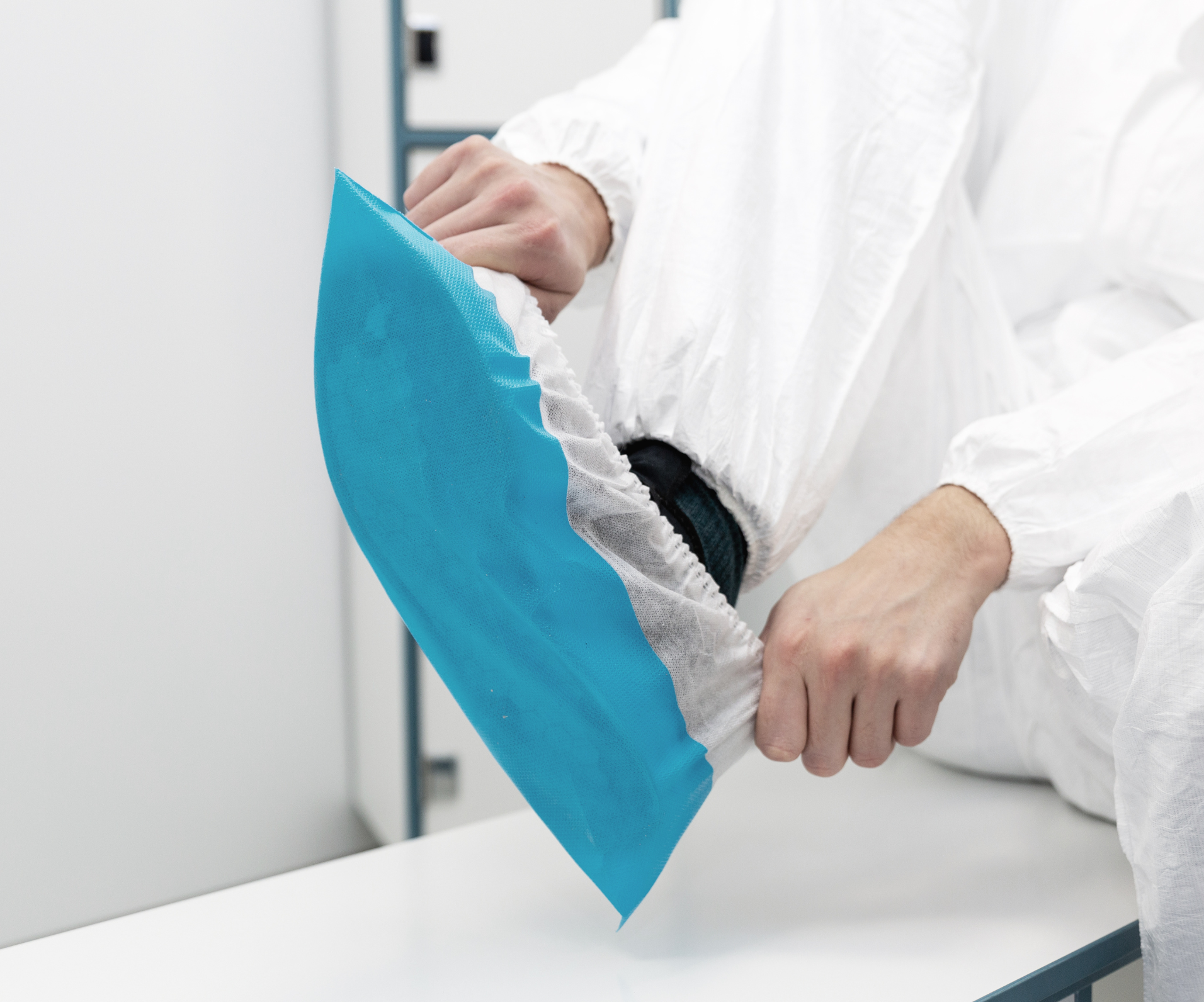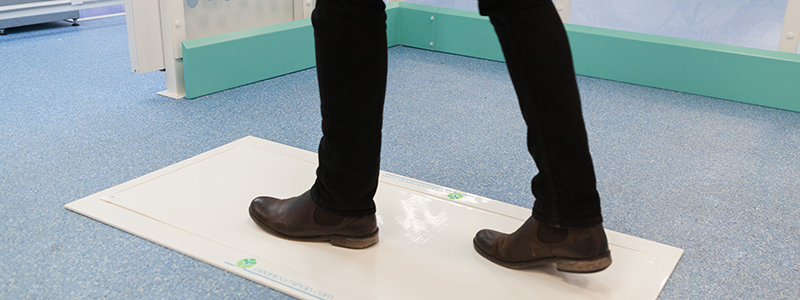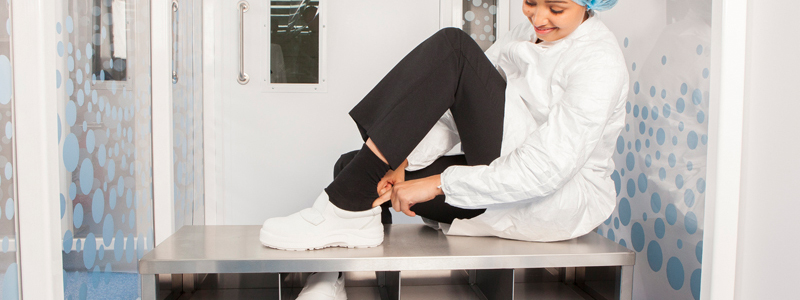Cleanroom Gowning and Entry Procedure
Contrary to safety PPE, clothing worn in cleanrooms acts to protect the environment from the wearer.
To reduce the risk of introducing contamination into a cleanroom, guidelines should be in place for preparing to enter and exit a cleanroom. Users must at all times use the correct entry and exit routes to the cleanrooms to maintain good practice methods.
As you gown, particles from your person will be disturbed and will naturally cascade down. To prevent these particles from landing on clean garments, it is accepted that you need to gown from the head down.
In this article, we look at an example of cleanroom gowning and entry procedure that can be used as a starting point for organisations. Remember to always take into consideration your own risk assessments and unique requirements.

Gowning Procedure
Pre-Preparation
Before preparing for entry ensure you have prepared your person so that you will not need to make an unscheduled exit from the cleanroom. This may include:
- Discard any chewing gum etc
- Blow nose
- Go to the toilet
- Drink water to remove any particles in the throat
Preparation
Prior to entering the change area, make the following preparations to ensure you are introducing as few particles as possible into the classified area:
- Wipe feet before entering
- Put on overshoes (if required)
- Remove unnecessary street clothes
- Remove and store any personal items in storage provided
- Remove any make-up and apply a suitable skin lotion
- Don mop cap/hairnet. Ensure all hair is tucked in
- Cover facial hair with a beard cover, if appropriate
- Wash hands (using a skin disinfectant if appropriate), dry (using a non-linting towel or hand dryer) and apply suitable hand lotion
- Walk over the sticky mat ensuring both feet make contact and enter the cleanroom change area

Change Area
When you are inside the change area, move slowly and deliberately to generate as few particles as possible. You can now begin to gown:
- Pick out correct cleanroom clothing – coverall, head cover, overshoes, gloves, masks, goggles
- Inspect all garments for tears or rips – dispose of any that aren’t suitable and replace before continuing
- Put on facemask and/or hood, touching the inside of the hood only. Ensure all hair is tucked into the hood before adjusting
- Don your chosen garment, e.g. hooded Tyvek coverall
- Open zip
- Hold sleeve ends to shoulders and gather the material making the coverall as short as possible
- If a bench is available, sit down before gowning
- Place each foot in gathered coverall and pull up over legs
- Fasten any leg adjustments around the ankle (should be a snug fit)
- Stand up carefully, still holding the top half of coverall
- Place each arm in sleeves and pull up – outside of coverall should not touch the back of street clothes
- Tuck in head cover (if worn) and zip up coverall
- Fasten any neck and sleeve adjustments, again ensuring a snug fit
Entry into the Cleanroom
It is good practice to have a stepover bench in place to separate the change area from the entrance area. The final gowning steps can be taken place inside the cleanroom entrance area:
- Once coveralls have been donned, footwear can be put on
- Sit on bench, lift one leg and put on footwear
- Swing leg over on to ‘clean’ side
- Repeat with the other leg
- Adjust footwear/boots so that they fit snugly and securely
- Put on protective goggles (if required)
- Check garments in a full length mirror to ensure there are no gaps between clothing and no hair is visible
- Remove donning gloves carefully (if not using the double gloving system) and wash hands and/or apply alcohol hand wash
- Working gloves can now be put on. They should be put on by touching the inside of the cuff only. Pull down cuffs after donning both gloves
- Enter cleanroom (over a sticky mat if provided)

De-Gowning Procedure
- De-gowning is done in reverse to the gowning procedure – from the feet up.
- When exiting the cleanroom, leave via the entrance area and go through the gowning area to exit:
- Using the stepover bench, remove footwear one at a time, placing leg over to ‘dirty’ side once removed
- Unzip coverall
- Use hands within coverall, remove over shoulders and down to waist
- Still sitting, remove one leg
- Hold the empty arm and leg avoiding contact with the floor
- Remove other leg
- Remove hood and/or face mask
- Store re-usable garments in appropriate containers
Aseptic Pharmaceutical Cleanroom
- Discard all garments and use a new set on re-entry
All other cleanrooms
- Masks and gloves to be discarded, but coveralls e.g. can be re-used according to your own risk assessment. Remove re-usable garments to avoid contaminating the outside as little as possible.
- Store in garment bags (separate pockets for various items), pigeon holes or cabinets.
Disposing of worn items
- Disposable items should not be stored or placed with re-usable items
- Disposable items should be discarded in line with company policy


READY TO START A NEW PROJECT?
Our design and build specialists have experience working with customers in all kinds of industries on a global scale, achieving great results time and time again. We’d love to work with you as well!
REQUEST A QUOTE